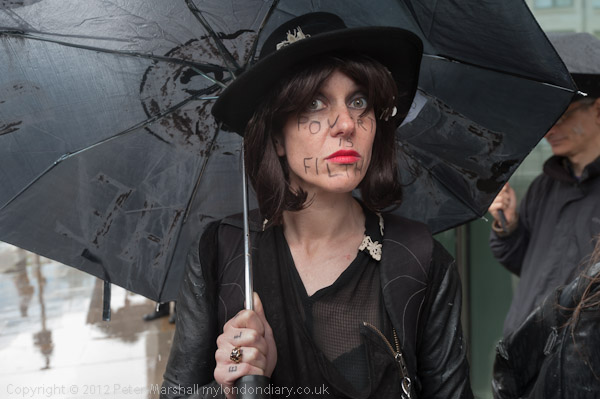
16-35mm at 31mm
The ‘Carnival of Dirt‘ was an event to point out the environmental damage, destruction of habitat, human rights abuses, deaths and wars around the world caused by the activities of mining companies, many of which are based in London. Much of their activities are financed by the major London financial institutions – the big UK banks, the Stock Exchange, our pension funds and the rest of the City.
One particular London institution, the London Metal Exchange prides itself on being “the world’s premier non-ferrous metals market and offering “futures and options contracts for aluminium, copper, tin, nickel, zinc, lead, aluminium alloy and NASAAC, steel billet, cobalt and molybdenum” and on “setting the global standard.”
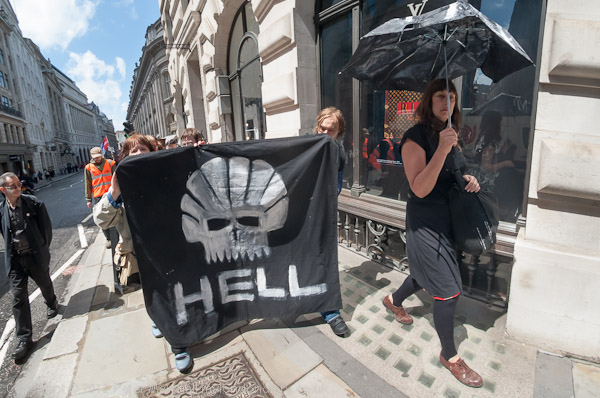
10.5mm, corrected to cylindrical perspective
It’s a industry whose standards have corrupted governments around the world, killed millions in countries such as the Congo, and gambles with the future of the planet. Among the chief villains are Xstrata, Glencore International, Rio Tinto, Vedanta, Anglo American, BHP Billiton, BP and Shell.
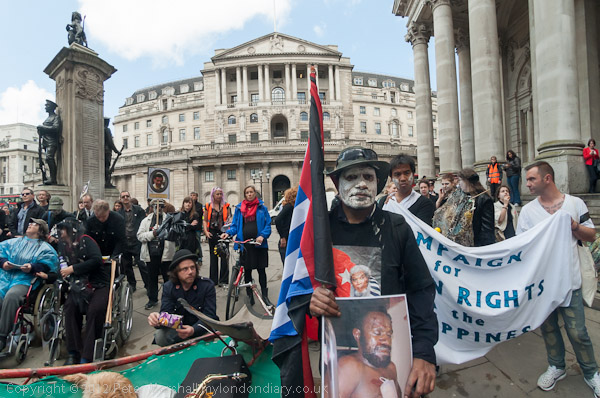
10.5mm, corrected to cylindrical perspective
Given that the problems caused by mining are truly global, the opposition to them needs to be global too, and as well as various UK based groups including UK Uncut (the mining companies massively organise to avoid tax) and Occupy, the Carnival brought together groups campaigning about the Congo, West Papua, the Philippines, Somalia, Latin America, Australia and the Canadian Tar Sands.
The morning’s event that I photographed was a funeral procession to honour the many who have been killed, with the Government of the Dead having some previous experience at such events. But it was a funeral with a New Orleans style carnival atmosphere and a rather good marching band playing.
Planned for a Friday in the middle of June we might have hoped for summer weather, but the day was cool with rather frequent showers, and I had considerable problems with the rain. Sometimes I do wish I had an underwater camera, although on this occasion as often there were more problems with the lenses than the cameras.
Given the price and amateur nature of the Nikon 18-105 mm I can hardly complain that it isn’t a good lens in wet weather. It’s a lens that almost doubles its length on zooming, pumping damp air in and out. Combine that with the temperature drops in heavy showers and the solar heating in the sunny intervals and it is never long before condensation begins to form on the internal lens elements and images degrade to unusable blurs.
Most of the time I would in any case be working with the 16-35mm on an event like this where its normally possible (and often essential) to work inside the group of protesters. And the Nikon f4 lens is large, well-sealed and entirely professional. Both zoom and focus take place by moving internal elements. But after a couple of hours working, this too, rather to my surprise, started steaming up and also became more or less unusable.
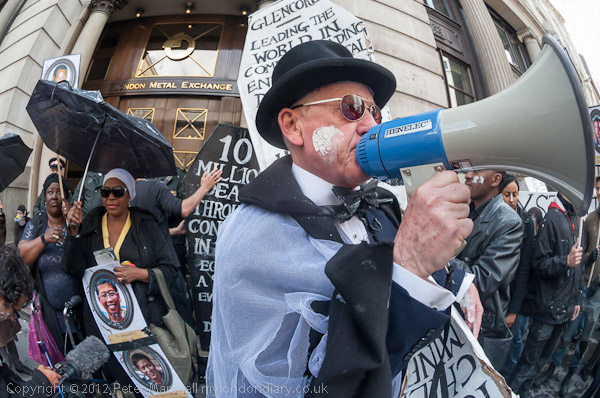
10.5mm
For around half an hour, the only usable lens in my kit was the 10.5 mm fisheye, and although it is one of my favourite lenses I have to admit it is hardly a general purpose optic. Fortunately there was plenty I could do with it, though I did curse a little later at the extra work it gave me in post-processing, where I needed to convert most of the images from the full-frame fisheye to cylindrical perspective. Later the 16-35 had more or less cleared and I was able to take a few images with that, though some show a little blurring.
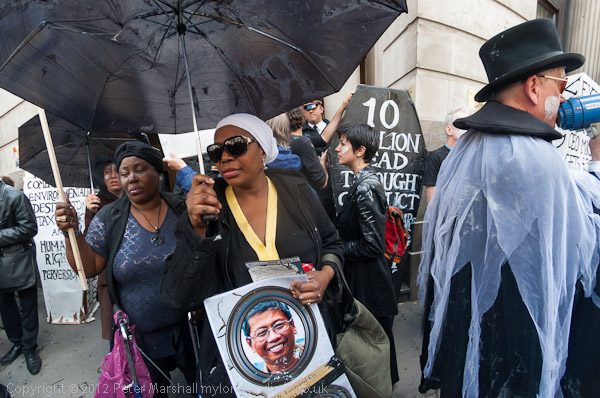
10.5mm, corrected to cylindrical perspective
Fortunately by this time the rain had almost stopped, as the exposed front element of the fisheye is great at collecting raindrops and just can’t be protected at all, just wiped immediately before each exposure. Even doing this you lose a few pictures from drops that land between wipe and shutter press.
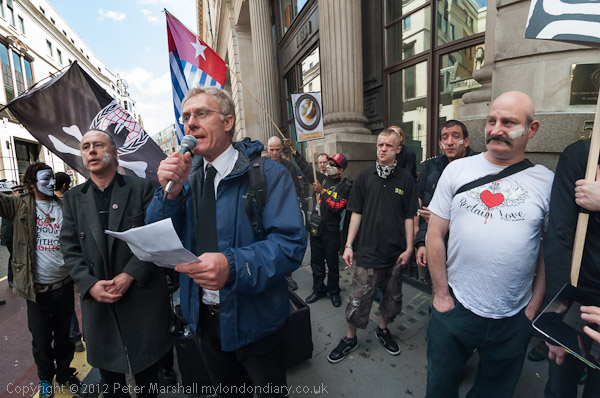
10.5mm, corrected to cylindrical perspective
On the train home I took a more careful look at the 16-35mm, still steamed up, and decided that the problem – or at least most of it – was not in the lens itself but on the rear surface of the filter screwed onto its front. Water must have got in between the glass and the metal body of the filter and at some point condensed there. Had I realised earlier I might have been able to keep working simply by unscrewing the filter and wiping the front element and rear of the filter dry before replacing it – or even working without a filter for a while, though I don’t like doing so.
All the images here were taken with the 10.5mm except for the top image, made with the 16-35mm. Of the 10.5mm images, all except one here were corrected to cylindrical perspective in post-processing.
________________________________________________________
My London Diary : Buildings of London : River Lea/Lee Valley : London’s Industrial Heritage
All photographs on this and my other sites, unless otherwise stated are by Peter Marshall and are available for reproduction or can be bought as prints.
To order prints or reproduce images
________________________________________________________